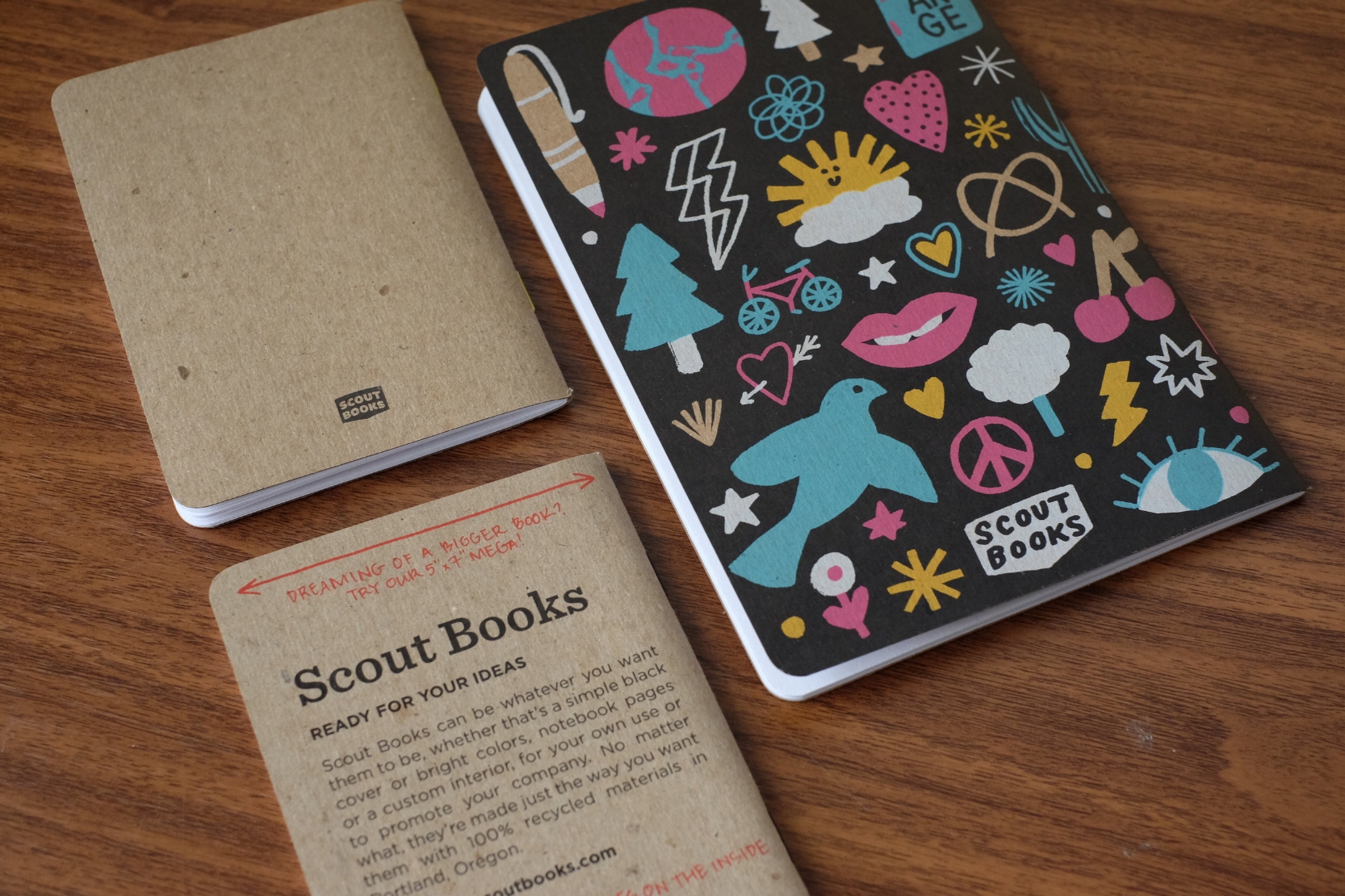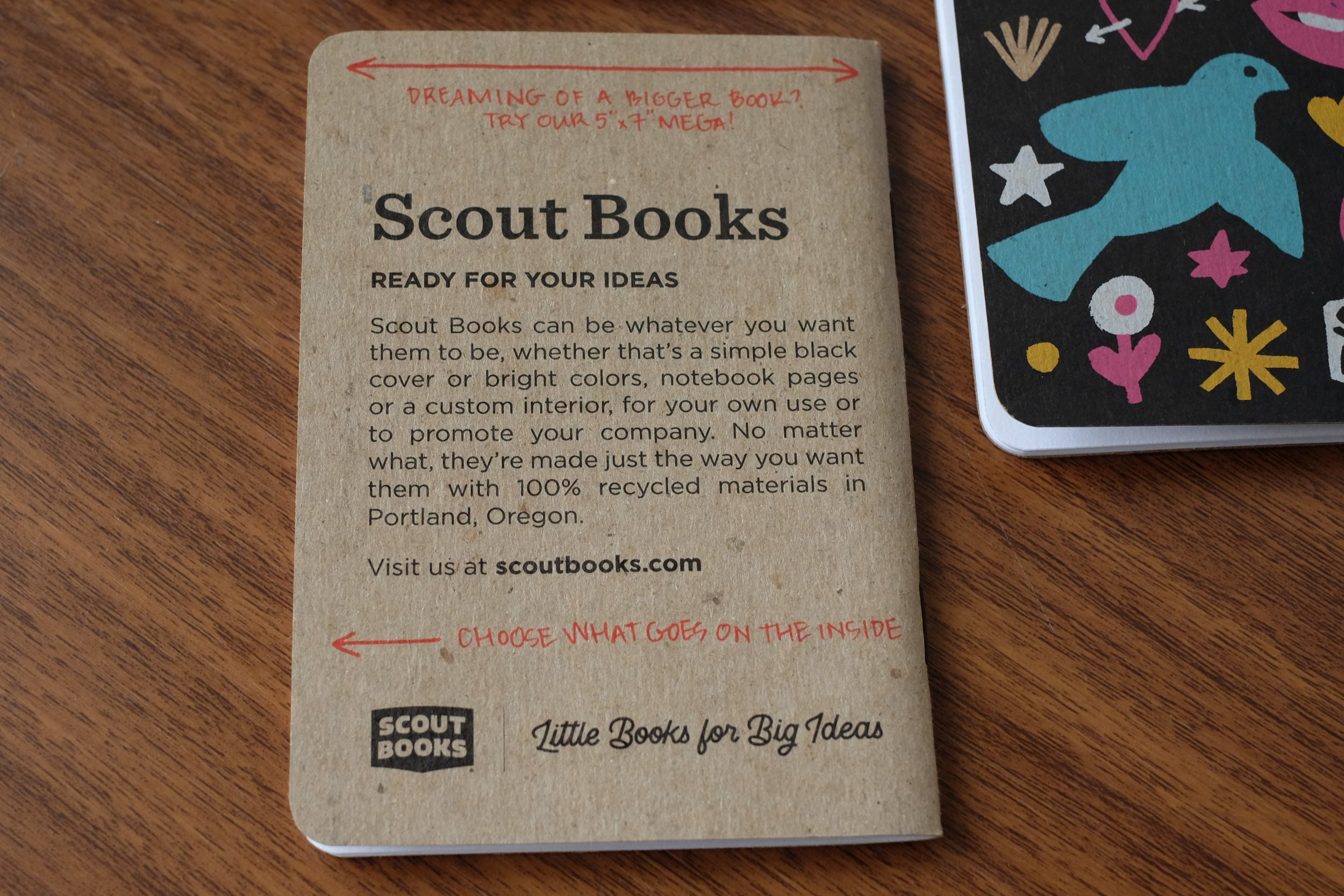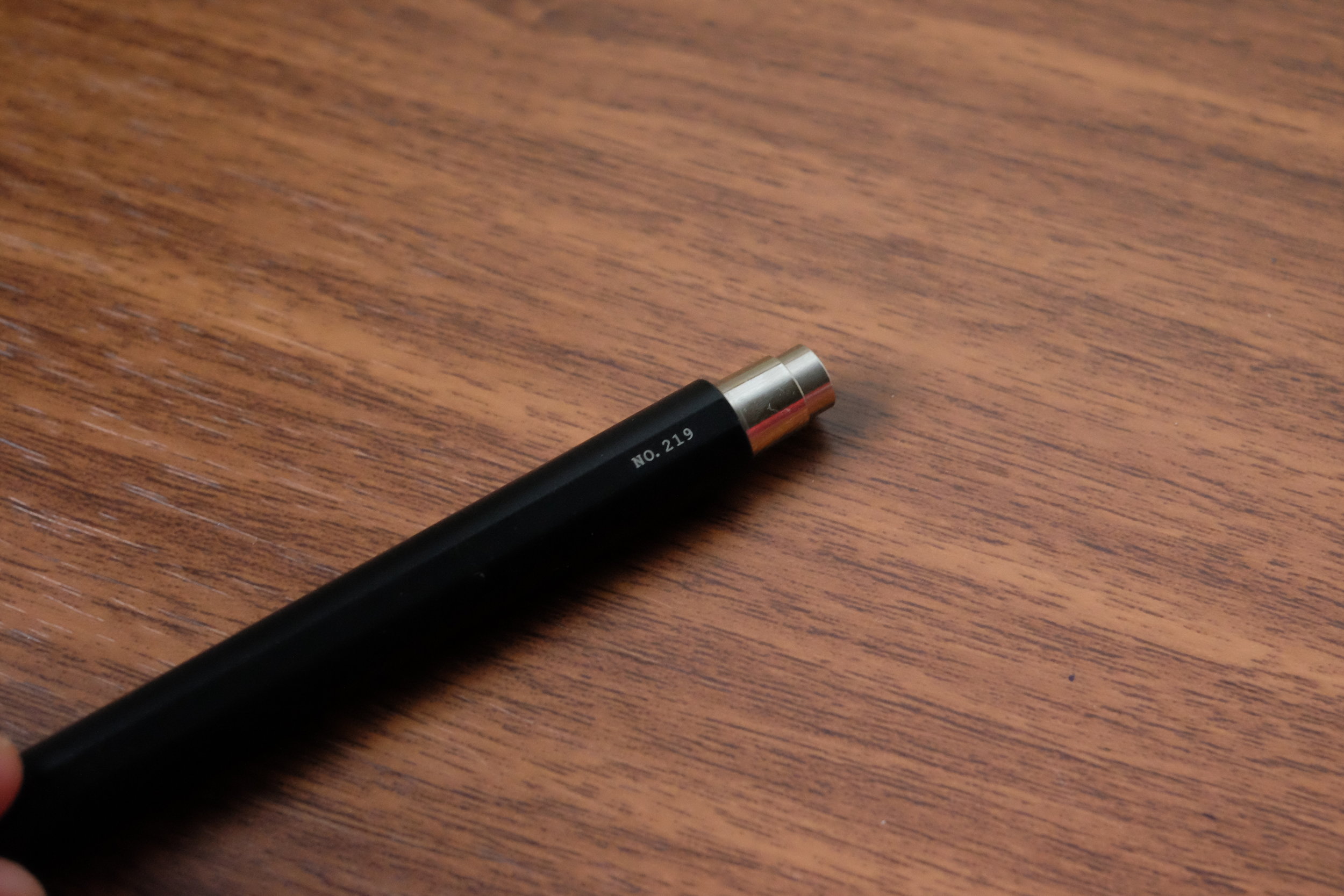Many thanks to Scout Books for sending me some of Portland, Oregon's finest stationery to review! I've used Scout books for years, and they've always delivered with quality, durable products. Surprisingly, I've yet to review them here.
Scout Books come in two sizes: Pocket and Mega. The Pocket notebooks are smaller than your typical Field Notes notebook: 3.5 x 5 inches (1/2 inch shorter than a Field Notes), with the Mega Notebooks at 5 x 7 inches. The Pocket-size Scout Book will fit inside the Passport-sized Midori Traveler's Notebook. Scout Books do contain less paper than comparable notebooks: 32 pages as opposed to the "standard" 48, but the paper feels a touch thicker so the lower page count may be to avoid "splitting" issues with the binding. These notebooks are quite sturdy, featuring a durable chipboard cover. Ruling options include blank, lined, and dot grid, but the availability of each may vary among the different Scout Books designs.
Scout Books feature "100% recycled paper," and the current version that the company sent me handles fountain pen ink much better than the first notebooks I tested several years ago. While there was ever-so-slight feathering, due to the paper being a touch fibrous, I experienced no bleedthrough or even much show through on the flip side of the page. The Scout Books paper is more than adequate for fountain pen use, especially considering it's a pocket notebook. One consideration, however, is the fibrous nature of this paper. With sharp or toothy nibs, you might run into issues with paper fibers clinging to the nib of your pen. If you're not a fountain pen nerd like me, Scout book paper should work perfectly well with whatever other pen or pencil you choose. Personally, I found this paper a joy to use with pencil.
A large part of Scout Books' business involves custom printing. If you want to custom design your own notebooks, or print a small-format book, Scout Books has various options available.
Takeaways and Where to Buy
If you like a relatively basic, no-frills pocket notebook that lets you just get down to the writing, then you should give the "little book for big ideas" a try. The best place to purchase Scout Books is directly through their website, though I've also seen Scout Books sold at independent bookstores and other retail outlets. You can purchase most of their pocket notebooks in a wide range of different colors and designs, sold individually, in the classic three-pack, or in a ten-notebook "bulk pack." The pricing structure is similar to other pocket notebooks, with individual notebooks at $4.95, three-packs at $9.99, and ten-packs at $24.99. If you prefer to buy in even larger quantities, there's an option for that, too. Scout Books also issues some special editions, such as the "Big Ideas Start Here" Mega Notebook pictured in this review, which is a collaboration with NYC-based illustrator Jordan Sondler. These notebooks are typically sold individually.
Many thanks to Scout Books for making this review possible!
Disclaimer: Scout Books sent me the handful of the samples featured in this review free of charge. This post contains affiliate links.









